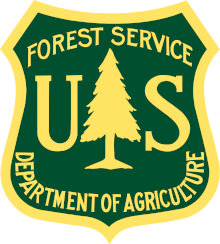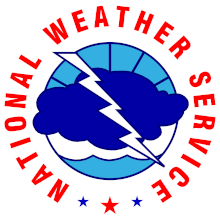You are here
Avalanche Advisory for 2013-04-12 08:36:01
- EXPIRED ON April 13, 2013 @ 8:36 amPublished on April 12, 2013 @ 8:36 am
- Issued by Nick Meyers - Shasta-Trinity National Forest
Bottom Line
The Mt Shasta Avalanche Center issued its last advisory as of April 7th, 2013. Spring time brings us the possibility of corn snow, powder or rain. Remember it is possible for spring storms to dump impressive amounts of snow and rain. Most of the avalanche activity associated with these spring storms occurs during or shortly after the storm event. Timing is critical when playing in avalanche terrain.
The Five Red Flags of Avalanche Danger any time of year include: 1) Recent/current avalanche activity 2)Whumpfing sounds or shooting cracks 3) Recent/current heavy snowfall 4) Strong winds transporting snow 5) Rapid warming or rain on snow.
Avalanche Problem 1: Normal Caution
-
Character ?

-
Likelihood ?CertainVery LikelyLikelyPossible
 Unlikely
Unlikely -
Size ?HistoricVery LargeLargeSmall

Normal caution advised.
While both soft slabs and hard slabs have occurred on Mt. Shasta during the spring and summer, wet slides are more common. These types of avalanches are more difficult to predict, harder to trigger, and not as fast as other avalanches. While wet slides are more difficult for people to trigger, many of the popular climbing routes on Mt. Shasta are in avalanche pathways. Wet slides occur more frequently when temperatures stay above freezing for 24 hours or longer, or moderate to heavy rain falls. Watch for: unusually warm temperatures, sinking into slush to your boot tops, water running on or in the snow pack, roller balls, wet sluffs, ski pole sinks to hand grip, moderate to heavy rain fall, recent wet slides. Glide avalanches are another type of wet slide and are also more common in Spring. We see more of these in the Castle Crags Wilderness and Castle Lake area where smooth rock surfaces exist.
Recent Observations
Terrain: Remember most of the terrain that we like to play on is greater than 30 degrees. Avalanches are possible on anything steeper than 30 degrees, especially wet snow avalanches. Avoid cornices, rock bands, terrain traps and runout zones of avalanche paths.
Weather: When there are storms in the spring, they can bring impressive amounts of rain, snow and wind. This can greatly increase the avalanche danger during and after storms. Heed the signs: Wind (significant snow transport and depositions), Temperature (rapid/prolonged warming, which in turn weakens the snowpack), and Precipitation (Snow or rain add weight and stress to the current snowpack).
Snowpack: If snow accumulates, give the snowpack a chance to adjust to the new snow load before you play on or near steep slopes (greater than 30 degrees). Most direct action avalanches occur within 24-48 hours of recent snowfall. Watch for obvious signs of snowpack instability such as recent natural avalanche activity, collapsing of the snowpack (often associated with a “whumphing” sound), and shooting cracks. If you see these signs of instability, limit your recreation to lower angle slopes.
If during the warmer parts of the day you see signs that the surface snow is getting warm (such as snowballs rolling down the slope) or you find the snow is sloppy enough that you sink in to your boot tops, it would probably be a good idea to play it cool and find another slope to play on or under, or call it a day. If this does happen, avalanches can be triggered. If the snow freezes at night, an early start will be imperative. The snow does soften quickly and will become increasingly unstable throughout the day as it is warmed by solar radiation. If the snow is soft early in the morning due to a lack of freezing overnight, it is probably a good idea to play another day.
Human Factor: Don’t forget to carry and know how to use avalanche rescue gear. You should NOT be skiing or climbing potential avalanche slopes without having beacons, shovels, and probes. Only one person in a group should be exposed to potential avalanche danger at a time. Remember, climbing, skiing, and riding down the edge of slopes is safer than being in the center. Just because another person is on a slope doesn’t mean that it is safe. Be an individual! Make your own decisions. Heed the signs of instability: rapid warming, “whumphing” noises, shooting cracks, snowing an inch an hour or more, rain, roller balls, wind loading, recent avalanche activity.
![]() Wet Slides: While both soft slabs and hard slabs have occurred on Mt. Shasta during the spring and summer, wet slides are more common. These types of avalanches are more difficult to predict, harder to trigger, and not as fast as other avalanches. While wet slides are more difficult for people to trigger, many of the popular climbing routes on Mt. Shasta are in avalanche pathways. Wet slides occur more frequently when temperatures stay above freezing for 24 hours or longer, or moderate to heavy rain falls. Watch for: unusually warm temperatures, sinking into slush to your boot tops, water running on or in the snow pack, roller balls, wet sluffs, ski pole sinks to hand grip, moderate to heavy rain fall, recent wet slides. Glide avalanches are another type of wet slide and are also more common in Spring. We see more of these in the Castle Crags Wilderness and Castle Lake area where smooth rock surfaces exist.
Wet Slides: While both soft slabs and hard slabs have occurred on Mt. Shasta during the spring and summer, wet slides are more common. These types of avalanches are more difficult to predict, harder to trigger, and not as fast as other avalanches. While wet slides are more difficult for people to trigger, many of the popular climbing routes on Mt. Shasta are in avalanche pathways. Wet slides occur more frequently when temperatures stay above freezing for 24 hours or longer, or moderate to heavy rain falls. Watch for: unusually warm temperatures, sinking into slush to your boot tops, water running on or in the snow pack, roller balls, wet sluffs, ski pole sinks to hand grip, moderate to heavy rain fall, recent wet slides. Glide avalanches are another type of wet slide and are also more common in Spring. We see more of these in the Castle Crags Wilderness and Castle Lake area where smooth rock surfaces exist.
Weather and Current Conditions
Weather Summary
WEATHER STATIONS -
Current weather station information is available if you click the "conditions" tab and then the desired weather station.
THIS SEASON: September and October were warm and dry with September recording exactly zero precipitation. November remained warmer than normal with precipitation almost double normal values, 9.16" vs. 5.08". A local weather COOP observed the 2nd wettest November on record. December started out wet and warm, but temperatures cooled and brought snow to very low elevations. Since our avalanche cycle near Christmas, we've had a few small storms that brought some small amounts of snow to the area, but did not produced any notable avalanches. January was below normal for precipitation with a long period of high pressure and sun that kept skiing conditions somewhat meager. We've had a few storms for 2013 that have brought us glimpses of wintery weather, but nothing to write home about! California and the Sierra Nevada have recorded the driest January and February on record. We currently have 4.5'-8.5' feet of snow above 6,500 ft. Since September 1st, Mt Shasta sits at 70% of normal, 26.06" recorded; normal 36.94". For 2013, we sit at 25% of normal with 5.36" recorded and 21.06" normal.


























































